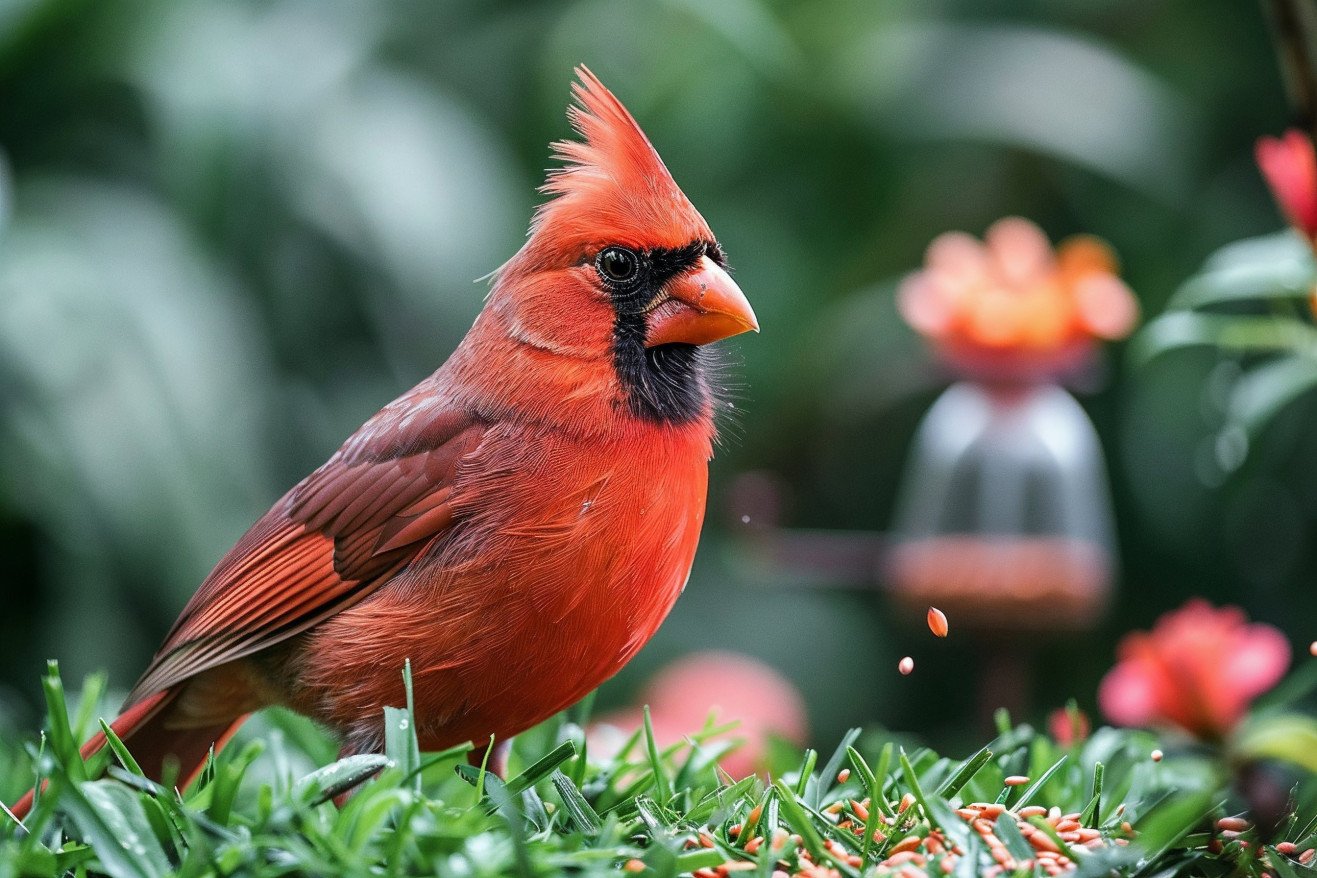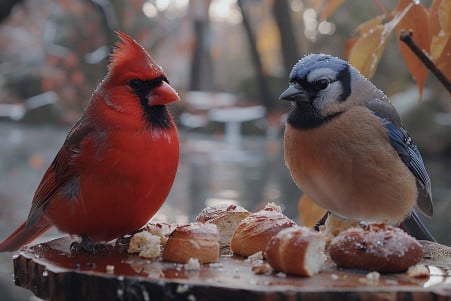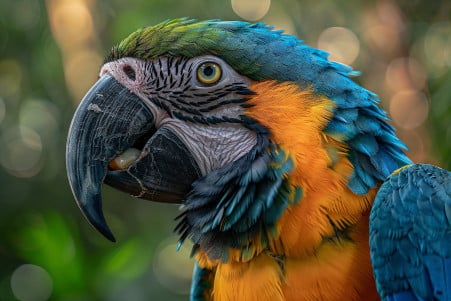Why Do Birds Eat Grass Seed? Understanding Bird Diets and Grass Seed in Lawns
11 March 2024 • Updated 10 March 2024

Birds are a common sight on lawns, but are they eating the grass seed? They are! Birds like sparrows, finches, and pigeons eat grass seed, and this can have an impact on grass growth and lawn care. However, there are ways to keep seeds safe and help lawns grow with the use of netting, mulch, and bird repellents.
In this article, we’ll look at ornithological and agricultural research to better understand why birds eat grass seed. We’ll learn about the kinds of birds that eat grass seed, how they impact lawns and natural ecosystems, and how to manage the relationship between birds and grass seed. This will give you a more complete picture of the role of grass seed in bird diets and how it affects lawns and biodiversity.
Do birds eat grass seed?
Avian Appetites: Grass Seed and Birds
Many species of birds depend on grass seed as an important part of their diet. Some of the most common grass seed–eating birds are sparrows, finches, and pigeons, but other species, like doves, quails, and starlings, also eat grass seed.
According to MOOWY, these birds have adapted to eat grass seed as part of their natural diet. Grass seed is attractive to birds due to its nutritional content, which includes carbohydrates and proteins that are essential for growth and reproduction.
The importance of grass seed in a bird’s diet can range from being a staple food to an opportunistic food source, particularly when other food sources are scarce. Avian Research reports that sparrows and finches are especially attracted to sunflower seeds because of their high nutritional value and the ease with which they can be harvested.
This can lead to birds congregating in areas where grass seed has been freshly sown, which can cause issues for homeowners, including uneven growth and patches of grass where seeds have been removed.
Understanding these dietary habits is important for ensuring that lawns and birds can coexist. Homeowners who understand which birds are most likely to eat grass seed can plan for and reduce the impact on their lawns while also gaining a greater appreciation for the role these birds play in the environment.
The Impact of Birds on Grass Seed Ecosystems
The predation of grass seeds by birds has a profound impact on the complex relationship between birds and their ecosystems. Birds are a key factor in seed dispersal, which helps plants spread and, in turn, helps maintain the diversity of ecosystems.
A 2023 article by Thompson et al. in the Journal of Applied Ecology even found that natural habitats near farms can help reduce the impact of birds on crops, suggesting that maintaining these habitats is a way to maintain a healthier, more sustainable ecosystem.
That said, the relationship between birds and grass seeds is also a bit more nuanced. While birds’ seed dispersal can help maintain plant diversity, a 2021 article by Green and Bradley in BioScience also found that birds can have negative impacts, especially when they eat seeds that have been planted to help restore specific grasslands, which can disrupt the planned growth of the plants in the area.
Research has shown that the relationship between birds and grass seeds has both positive and negative impacts on plant populations and agricultural practices. For example, a 2022 article by Patel et al. from the Wiley Online Library found that birds’ feeding habits can impact the prevalence of foodborne pathogens in crops.
This shows that the relationship between birds and grass seeds needs to be managed in a way that balances bird conservation with the protection and cultivation of grasslands.
As we learn more about the ecological impact of birds on grass seed dispersal, it’s clear that the nutritional value of grass seeds is a key factor in their relationship with birds. Ultimately, birds’ attraction to the nutritional value of grass seeds has a number of impacts on the ecosystem.
Nutritional Quality of Grass Seed
The protein, fiber, and essential minerals that make up the nutritional content of grass seeds are a major draw for birds. For example, millet, teff, and amaranth are all high in nutrients that are important for birds. In fact, millet and amaranth are especially attractive to birds because of their high protein and fiber content, according to MSU Extension.
That said, not all grass seeds are created equal when it comes to their appeal to birds. Research from Oregon State University points to the importance of managing the nutritional quality of grass seeds to make some varieties more attractive to birds. This could mean increasing the levels of certain nutrients that make the seeds less appealing to birds, such as protein or fat.
In addition, the nutritional quality of grass seeds can also impact the seeds’ ability to germinate and grow. If birds are less likely to eat the seeds because of their nutritional content, the seeds are more likely to grow and thrive, which can lead to healthier lawns and ecosystems. Finding a balance between the nutritional quality of grass seeds and the needs of birds is important for healthy bird populations and healthy green spaces.
Protecting Your Lawn: How to Keep Birds Away From Grass Seed
Preventing birds from eating the grass seed you’ve just planted is an important part of establishing a new lawn. One way to do this that Avian Control recommends is using lightweight bird repellent netting that lets in sunlight and water but keeps birds out.
Another option is to cover the seeds with a layer of mulch that will keep them hidden from birds and create the right conditions for growth, using straw that has been certified as weed-free.
Birds’ natural tendencies to avoid danger can be used to keep them away from your lawn with visual deterrents like predator decoys and sound deterrents like distress call devices. Bird B Gone recommends using a combination of these methods to effectively deter birds without hurting them, and they note that it’s the best way to comply with federal wildlife protection laws.
To reduce the likelihood of birds eating your grass seed, choose grasses that are less palatable to birds and plant them in the late summer or early fall when soil temperatures are best for germination. This is also a time when bird activity is at a minimum, which will help protect your lawn as it gets established, according to Lyric Wild Bird Food.
Following these tips will help you get your lawn off to a strong start while balancing your goals for lawn care with your goals for bird conservation.
How Birds Impact and Are Impacted by Grass Seeds
In conclusion, birds like sparrows, finches, and pigeons rely on grass seed as a major food source, and this reliance has led to a complex relationship between birds and grass seeds. This relationship highlights the importance of understanding the ecological role of birds in grass seed ecosystems and the nutritional importance of grass seeds to birds. As birds help plants disperse their seeds, they also help and hinder plant populations, diversity, and agriculture.
For both homeowners and environmental managers, this means they need to consider both the need for healthy, green lawns and the need to protect bird populations and their natural behaviors. They need to find a balance that may include using protective measures like netting, mulch, and careful planting schedules to protect grass seed while still allowing birds to continue their ecological work.
In the end, it’s obvious that the relationship between birds and grass seeds is complex and has many aspects. It’s important to continue to study this relationship and to manage it in ways that are responsible and well-informed so that both lawns and birds can flourish. This balance is not only possible but important for the long-term health of our environment.


